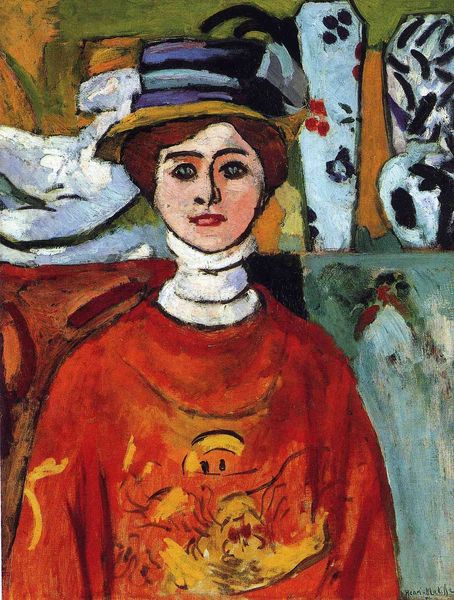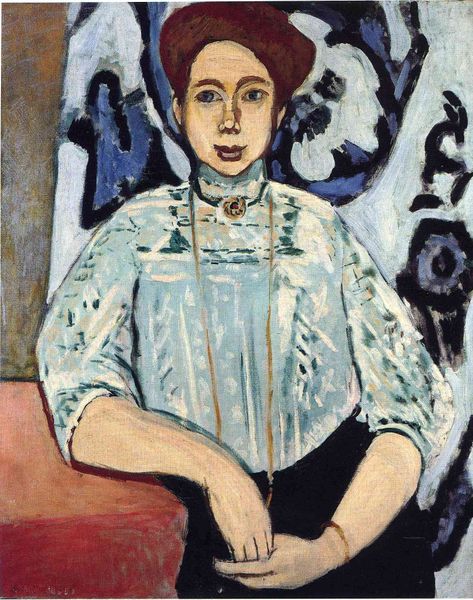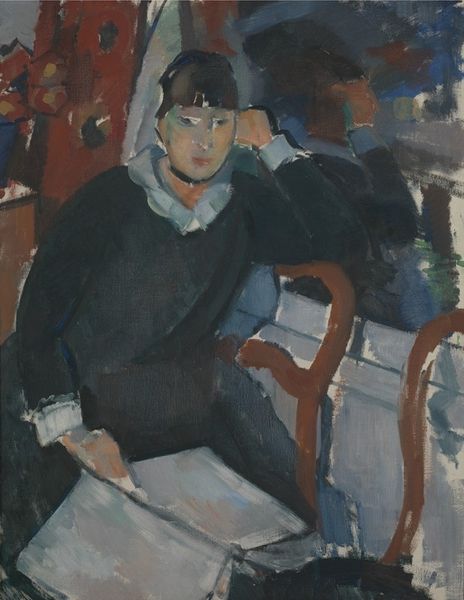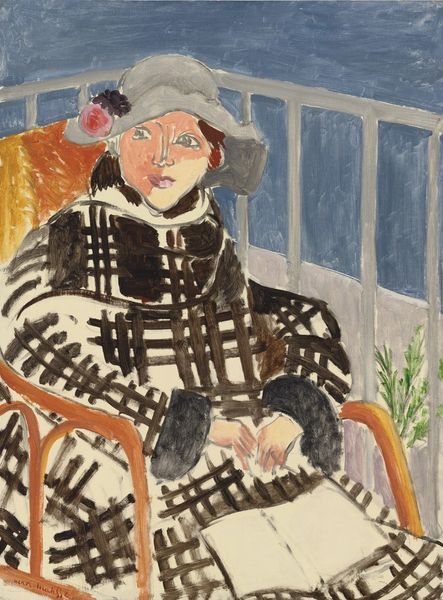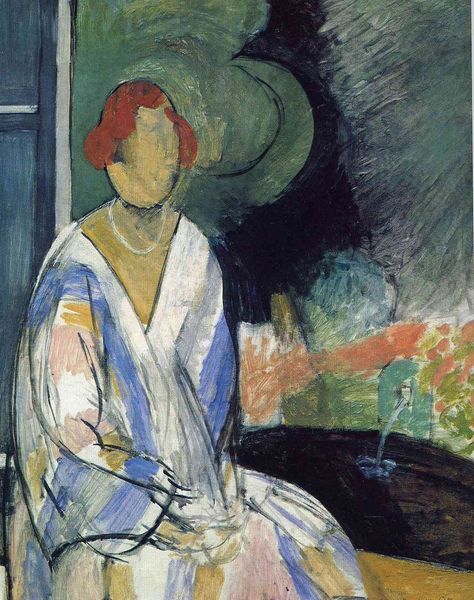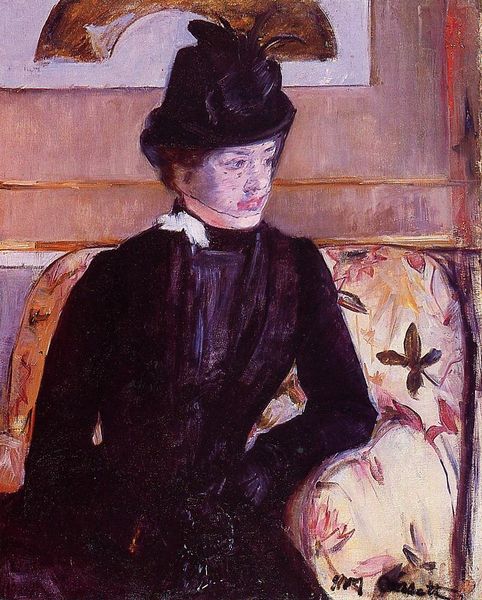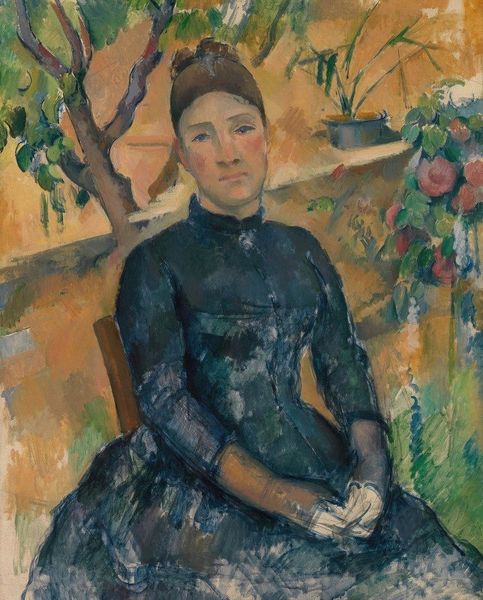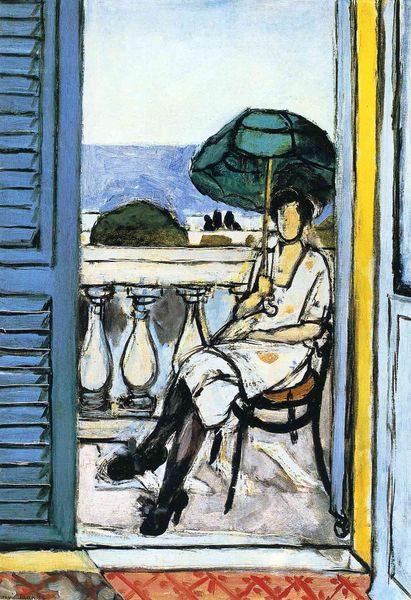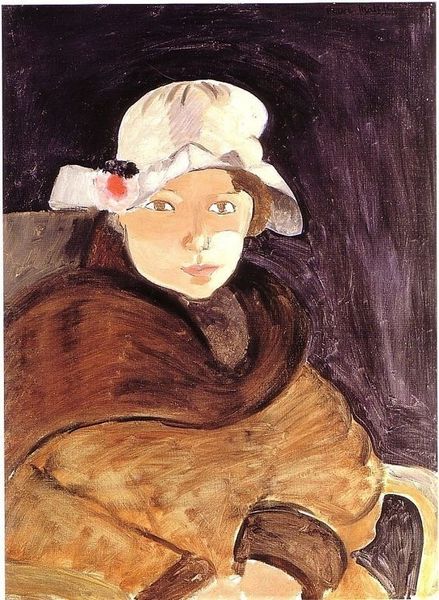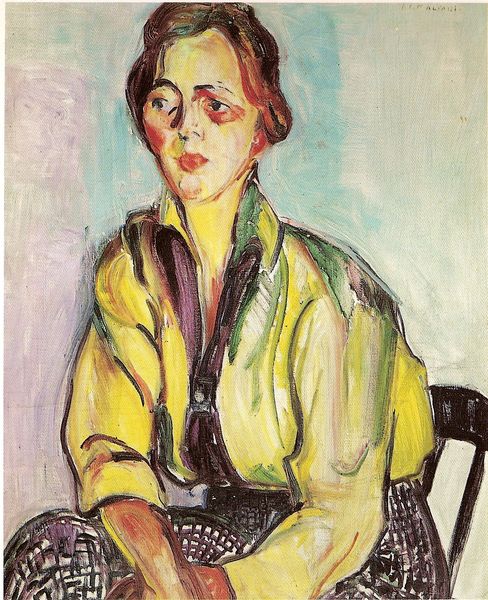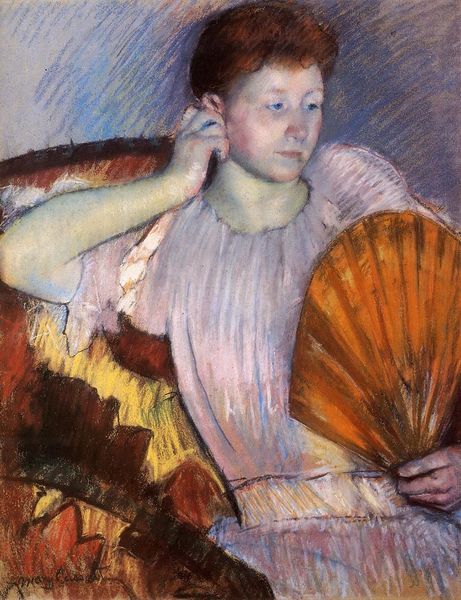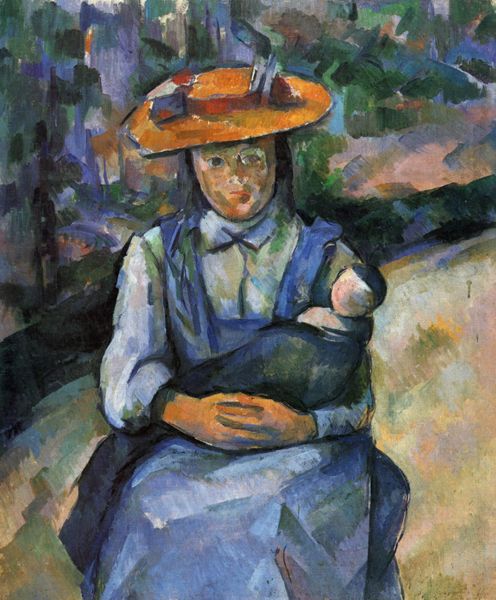
Copyright: Public domain US
Curator: Welcome! Today, we're looking at Henri Matisse's "Mlle Matisse in a Scottish Plaid," created in 1918 using oil paint. Editor: The first thing that strikes me is the contrast between the incredibly vibrant blue of the sea or sky and the stark, almost brutal pattern of the plaid. It's unsettling in a fascinating way. Curator: It’s interesting you say unsettling. Considering its historical context, painted toward the end of World War I, this image could be viewed through the lens of loss and reevaluation. Perhaps that harsh contrast mirrors the period's socio-political turbulence and challenges to traditional social structures. The Scottish plaid, far from being merely decorative, could also be viewed as a reference to cultural identity under duress during this time of upheaval. Editor: Precisely! The materiality of the paint, too, lends itself to this feeling. See how thickly it's applied in some areas, like the sky, compared to the more delicate handling of the face. The impasto lends a tactile quality, suggesting the weight of these historical concerns. What do you think of the materials and how they contribute to its social message? Curator: Absolutely. Matisse often explored the female figure not merely as a passive muse, but in the context of their own agency and roles, making paintings like this ripe for feminist analysis. The plaid, heavy and bold, nearly overwhelms her, and yet, she meets the viewer's gaze head-on. Her position in that moment. How do the labor conditions inform its historical analysis? Editor: And considering Matisse’s production methods at the time. He certainly benefited from a studio environment and networks of support to get his work out there, which brings in questions of labor—his labor, the models' labor. These aspects directly contributed to the image we see today. Do you agree that these factors of support matter a great deal, socially? Curator: Indubitably. It provides context for artistic production within broader socioeconomic networks. The legacy of the avant-garde often overlooks these factors. Considering who has the privilege of dedicating their labor to art creation shapes historical narratives. Editor: I appreciate that final sentiment, especially in our hyper-commodified world. Hopefully viewers will carry some of these insights as they walk around!
Comments
No comments
Be the first to comment and join the conversation on the ultimate creative platform.
